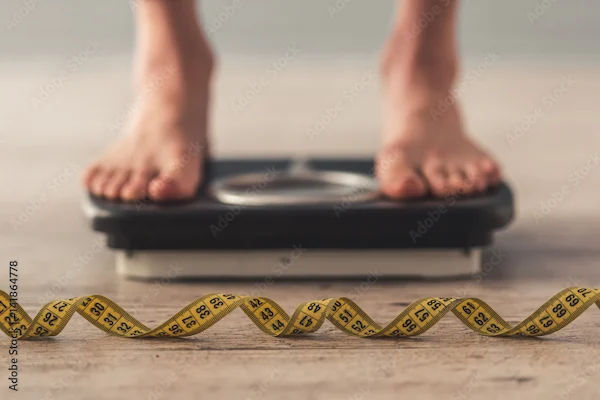How To Reduce Skinny Fat?
Struggling with a skinny-fat body type—thin frame but excess body fat? Learn how to reduce skinny fat through a balanced diet, strength training, and smart lifestyle changes for a leaner, more toned physique.

Written by
Last updated on 3rd Jul, 2025
There are people who look thin but still have stubborn fat around their belly, thighs, or arms. This condition is commonly known as "skinny fat"—a term used to describe people who have a normal or low body weight but a higher percentage of body fat and lower muscle mass. With the right approach, you can transform your body composition and become leaner and stronger. This article explores ways to reduce skinny fat.
What Is Skinny Fat?
"Skinny fat" (or "normal-weight obesity") means having a slim appearance but carrying excess fat, especially around the midsection, with little muscle definition. People with this body type often have low muscle mass and high body fat percentage. This condition can be misleading because even if you don’t look overweight, you may still face health risks like insulin resistance, high cholesterol, or metabolic issues.
Causes of Skinny Fat
Several factors contribute to being skinny fat:
Poor Diet: Eating too many processed foods, sugars, and unhealthy fats while lacking protein and nutrients.
Lack of Strength Training: Relying only on cardio without building muscle.
Sedentary Lifestyle: Sitting for long hours without physical activity.
Genetics: Some people naturally store fat more easily.
Hormonal Imbalances: Issues like insulin resistance or high cortisol (stress hormone) can increase fat storage.
Effective Ways to Reduce Skinny Fat
The key to reducing skinny fat is losing fat while gaining muscle. Here’s how you can do it:
1. Strength Training is Necessary
Cardio alone cannot fix skinny fat. Muscle mass needs to be developed. To develop muscle mass:
Weight lifting (squats, deadlifts, bench press)
Bodyweight exercises (push-ups, pull-ups, lunges)
Resistance training (bands, dumbbells)
Aim for 3-4 strength sessions per week.
2. Consume More Protein
Protein helps build muscle and keeps you full. Include:
Lean meats: Chicken, fish, turkey
Eggs
Dairy: Greek yogurt, cottage cheese
Plant-based options: Beans, lentils, tofu
3. Cut Down on Sugar & Refined Carbs
Processed foods and sugary snacks spike insulin, leading to fat storage. Instead, consume:
Whole grains: Oats, quinoa, brown rice
Vegetables & fruits
Healthy fats: Avocados, nuts, olive oil
4. Do Not Overdo Cardio
Too much cardio can burn muscle instead of fat. Opt for:
HIIT (High-Intensity Interval Training): Burns fat efficiently.
Walking: Great for overall health without muscle loss.
5. Prioritise Sleep & Stress Management
Poor sleep and high stress increase cortisol, which promotes fat storage.
Sleep 7-9 hours daily
Practice relaxation techniques like meditation and deep breathing.
6. Stay Consistent & Patient
Body recomposition (losing fat while gaining muscle) takes time—expect results in 3-6 months with consistent effort.
When to Consult a Doctor?
If you’re struggling despite following these steps, consult a nutritionist or fitness expert. Hormonal imbalances (like thyroid issues) may need medical attention.
Conclusion
Getting rid of skinny fat isn’t just about dropping pounds—it’s about building a healthier, stronger body. Focus on strength training to gain muscle, eat a balanced diet rich in protein and whole foods, and cut back on sugar and processed carbs. Don’t overdo cardio, manage stress, and make sleep a priority. With steady effort and a consistent routine, you’ll gradually replace fat with lean muscle and achieve a fit, toned look that reflects your hard work.
Consult Top Dietician
Consult Top Dietician

Ms Malabika Datta
Dietician
19 Years • Bsc (Clinical Nutrition & Dietetics), Msc (Dietetics & Food Service Management)
Kolkata
Malabika’s Diet Clinic, Kolkata

Neelanjana J
clinical nutrition
3 Years • Bsc., Msc. Nutrition and Dietetics.
Bengaluru
Apollo Clinic, JP nagar, Bengaluru

Dr Darshana R
General Physician/ Internal Medicine Specialist
15 Years • MBBS, MD, DNB (Internal Medicine), Diploma in Allergy, Asthma and Immunology , Fellowship in Diabetes
Bengaluru
Apollo Clinic, JP nagar, Bengaluru
(100+ Patients)
Ms Chetu Singhi
Dietician
20 Years • MSC Dietetics & Nutrition
Kolkata
RB Diagnostic - Dietician Diet2fit Chetu Singhi, Kolkata

Ms Geetanjali Mengi
Dietician
20 Years • BSC, MSC Dietetics & Food Service Management, PG Diploma in Dietetics & Hospital Food Service
Mumbai
Geetanjali Medical Nutrition Clinic, Mumbai


